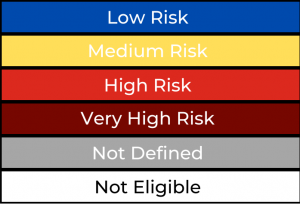At GECA, we know that there’s no such thing as sustainability without considering the treatment of people across your supply chains. One way to begin your journey in improving social sustainability in your company is to undertake a high-level assessment of social risks across your company’s global supply chains using a Social Life Cycle Assessment (S-LCA) method.
According to UNEP Guidelines for Social Life Cycle Assessment of Products (2020):
“…a Social Life Cycle Assessment (S-LCA) is a social impact (and potential impact) assessment technique that aims to assess the social and socio-economic aspects of products and their potential positive and negative impacts along their lifecycle encompassing extraction and processing of raw materials; manufacturing; distribution; use; re-use; maintenance; recycling; and final disposal. S-LCA complements Environmental LCA with social and socio-economic aspects.”
A lifecycle perspective brings powerful insights when considering products and services from a sustainable development perspective. It aims to provide increased knowledge on the areas of People, Planet, and Profit/Prosperity along the entire supply chain, from raw material extraction to the end of life.
GECA is licensed to use the Social Hotspots Database (SHDB), using the S-LCA method. We use this to help our clients identify hotspots for further investigation and as part of their social sustainability due diligence. The SHDB provides a risk mapping tool with information on social risks in 244 countries and territories and across 57 sectors. It can be a valuable tool for companies to conduct hotspot and risk assessments around complex social issues.
The SHDB’s S-LCA quantitatively evaluates the lifecycle social impacts of production and consumption, including those associated with worker’s rights, community development, consumer protections, and societal benefits.
An S-LCA method analyses the impact on the entire supply chain, highlighting potential social risks and opportunities in the global economy. GECA’s Social Hotspot Assessment provides transparent information and can help companies improve the management of social responsibility issues and plan for improvements.
Why should companies conduct a Social Hotspot Assessment?
Companies might use a social hotspot assessment for several reasons. One reason is to comply with legislation, like the Modern Slavery Act introduced in Australia in 2018. For example, it is essential to find social hotspots to understand supply chain risks and prevent issues related to modern slavery.
Another reason is the risk of reputational damage. Corporate Social Responsibility (CSR) has great importance in today’s political, social and economic context. Media channels frequently highlight content on the topic, discussing the social impact of products and services during their lifecycles. A lack of social transparency within a company can lead to a loss of legitimacy and reputation in the marketplace.
Knowing their social hotspots can also assist companies in following
governance best practices by measuring and effectively managing their supply chains. The more they know, the better they can implement procurement policies and processes to avoid risks.
We can provide companies with information on the social risks in their supply chain, aiding in decision-making and facilitating dialogue on the social aspects of production and consumption. This can improve the performance of an organisation and, ultimately, the wellbeing of all stakeholders.
How GECA’s Social Hotspot Assessment can help you
Firstly, we will work with you to gather relevant details about your company. These can include:
• information about your suppliers and operations;
• annual spend;
• product or service sector;
• materials used and their sources (if known);
• any certifications or other avenues of mitigation for previously identified risks.
This information is kept confidential.
Using the above data, the SHDB can identify high-level risks regarding working conditions and other social impacts in global supply chains. The assessment refers to country/sector/material risks based on many references and methods. These data sources include intergovernmental databases, country statistics, NGO reports, trade unions and academic papers. For example, it contains data from the International Labour Organization (ILO), UNICEF, the World Health Organization (WHO), the U.S. Department of Labor, the U.S. Department of State, Eurostat, the World Bank, and more.
Each company’s supplier is assessed (using the information provided) against four categories: labour rights and decent work, health and safety, human rights and governance. They are then given a rating to describe the severity of the situation, as per the following key:

Based on the identified hotspots and levels of risk, GECA will then identify areas for improvement. This includes creating a 3-year roadmap for your company to improve your supply chain risks and social impacts.
If you would like to go further, GECA also offers an Environmental Hotspot Analysis to help you understand the intersection of social and environmental issues, better aligning environmental sustainability efforts with social efforts.
If you want to learn more about our Social Hotspot Assessment or any other services, contact Jess Mutton, Head of Business & Strategy at GECA, via jess@geca.org.au.



























